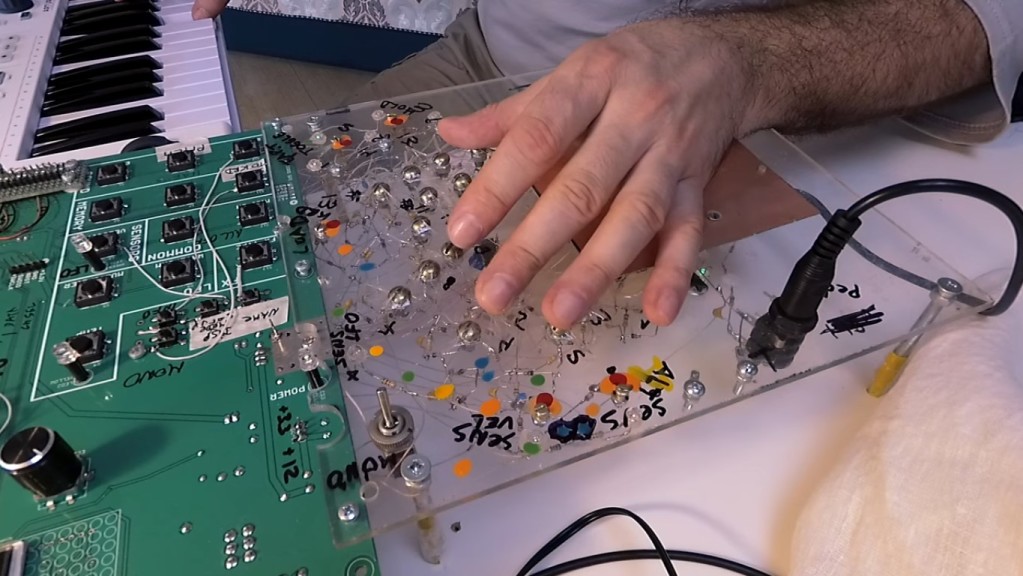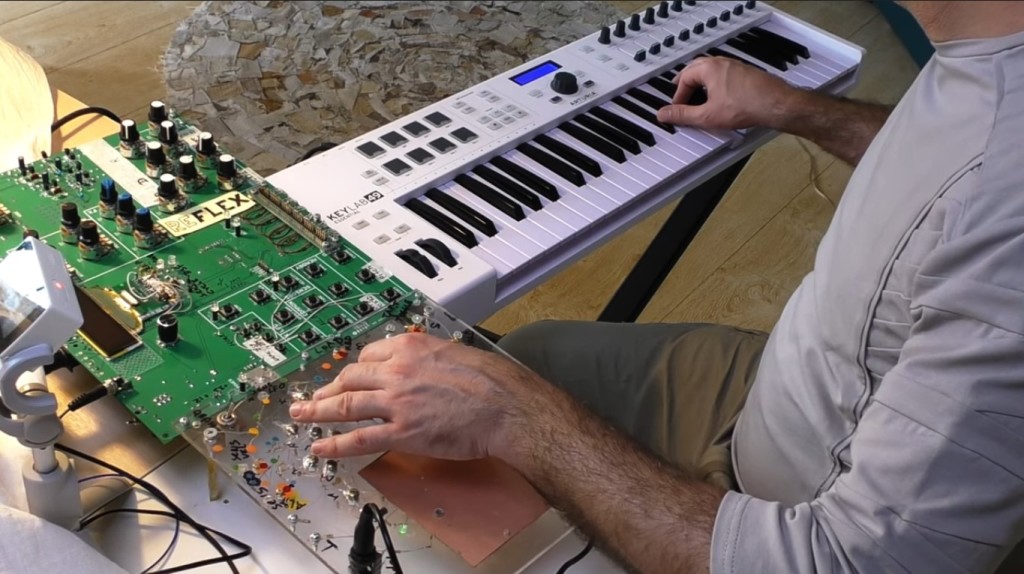SOMA’s “romantic engineering” just hit some crazy new level – their upcoming 6-voice digital polysynth is paired with a multidimensional sensor-controller.
The demo from creator Vlad Kreimer is wild – it looks more like a circuit bending project, but far from just randomly glitching sounds, it looks like you really get timbres under your fingers:
Here’s what we know so far:
- 6-voice polyphony
- Digital synthesis core, direct digital synthesis
- 16 small hemispheres arranged for touch control
- Each sensor based on a “high frequency transmitter-air-receiver chain” meant to capture the position of your palm
- Audio-rate sensing (for high timing precision)
- “Pure math synthesis” – well, basically not fixed wavetables but generated sounds so you get fully parameterized synthesis (which with the integrated controller is quite clever)
- Dedicated microprocessor and separate effects per voice
- Discrete components and custom analog output (see below)
And yadda yadda, the usual bit about being like an acoustic instrument. But that’s fair, because instead of the abstracted control you get with knobs, you have continuous, audio-rate control of the timbre which is indeed closer to acoustic idioms.
The controller bit is the most interesting:

The main part of the sensor-controller consists of 16 small hemispheres arranged ergonomically in a way that provides comfortable and simultaneous access to all of them for the fingers of your hand. Each hemisphere contains a tiny version of a high frequency transmitter-air-receiver chain, where the human finger functions as a kind of obstacle that affects the connection. It captures the position of your palm and fingers from 16 points of view. The sensor data collected by each hemisphere is connected in a smart way with one or more synthesis parameters. Combinations of several sensors can be processed in a separate way and attached to a unique set of synthesis parameters. Sensor output is processed at a speed of 23 kHz, which is higher than the audio range, and reaches the synthesis core with latency of no more than 50 microseconds. Tiny movements of your fingers can drive the very synthesis core, letting you play with the process of synthesis directly and instantly.
Yeah, take that, D-BEAM / Alesis AirFX! (Sorry, they had the right idea but – this is a much, much more usable and high-performance sensor. And this is closer to the original, historic precision of the Theremin than those IR range sensors were ever really intended to be.)
But there’s some fun stuff on the digital side, too – true to SOMA’s engineering passions. He replaced standard digital-to-analog converters with his own custom, raw PWM outs, and built the whole thing with discrete through-hole bits and transistors – no OPAMPs in sight. I think that may not make so much of a difference in and of itself as it speaks to how original and esoteric SOMA like to be. But that’s the joy of this thing.

There is a lot of parallelism in the engineering, so we’ll see what this costs – separate microcontrollers for each voice for, uh, some reason, plus separate effects per voice. That makes me a little scared this was massively over-engineered just for some audiophile digital specs, but … well, we’ll see what comes out. I almost wish that controller were available as a separate unit, just to see what other applications it might have.
There’s more – upgradeable firmware, yes there are 17 knobs doing something, no menus, and…
I just can’t wait to see this thing. Full preview from the source: